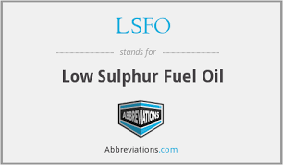
Viewpoint: LSFO Prices and demand to continue to rise

The impending International Maritime Organization (IMO) cap on sulphur content in ship emissions begins on 1 January, lowering sulphur levels allowed from 3.5pc to 0.5pc. All major bunkering ports in the Americas were offering 0.5pc sulphur fuel oil by November, with the exception of ports in Peru and Ecuador, where suppliers were still waiting to hear from domestic refiners about supply dates.
Increased demand for 0.5pc sulphur fuel oil and fluctuating availabilities has caused the price spreads between 0.5pc sulphur fuel oil and one of the chief alternatives, MGO, to narrow at some ports in the Americas. For most of 2019, 0.5pc resid prices have been volatile due to varying degrees of availability and the terms of the trades. This is expected to remain the case at least for the early part of 2020 as the market continues to adjust to the sulphur regulation.
In Houston and Panama, the 0.5pc sulphur and 0.1pc MGO spread declined from $59/metric tonne (t) and $45/t in October to $43/t and $30/t in November, respectively. On 16 December, 0.5pc sulphur in Panama sold at a premium to MGO before dropping back below gasoil the next day.
No more HSFO in Brazil and Argentina
Suppliers in Brazil and Argentina began exclusively selling 0.5pc sulphur fuel oil as of November and October 2019 respectively, eschewing the high-sulphur fuel oil (HSFO). Prices for the lower sulphur fuel oil at two of each country's busiest ports, Santos and Buenos Aires, have been the cheapest in the Americas, because the low-sulphur resid is produced locally using indigenous, sweet crude. Santos and Rio de Janeiro are expected to remain the cheapest ports for 0.5pc sulphur fuel oil in the western hemisphere in 2020. Brazil has also seen increased demand for its sweet resid from Singapore, the biggest bunkering market in the world.
By comparison Mexico and Venezuela, which produce residual fuel oil with over 3.5pc sulphur content, will see their export avenues narrow. This could ultimately drive the two countries to reduce their refinery utilization rates in order to reduce their resid production.
Some HSFO demand will remain
There is expected to be some demand for HSFO as some companies have chosen to install scrubbers on vessel, allowing them to burn HSFO but with the emissions equal to that of 0.5pc SFO. HSFO demand will likely be higher in Florida than other parts of the US in part because the three cruise lines, Carnival, Royal Caribbean and Norwegian, are headquartered there.
HSFO availabilities for bunkering in the US started to tighten at the end of November, as suppliers cleaned out their storage tanks and bunker barges to accommodate for 0.5pc sulphur fuel oil.
Even though HSFO prices are expected to drop further in 2020, shipowners that made scrubber investments have entered into term agreements for the supply of HSFO at different ports in order to ensure the product will be available on demand.
By Luis Gronda


Trump weighs using $2 billion in CHIPS Act funding for critical minerals

Codelco cuts 2025 copper forecast after El Teniente mine collapse

Electra converts debt, launches $30M raise to jumpstart stalled cobalt refinery

Barrick’s Reko Diq in line for $410M ADB backing

Abcourt readies Sleeping Giant mill to pour first gold since 2014

Nevada army depot to serve as base for first US strategic minerals stockpile

SQM boosts lithium supply plans as prices flick higher

Viridis unveils 200Mt initial reserve for Brazil rare earth project

Tailings could meet much of US critical mineral demand – study

Kyrgyzstan kicks off underground gold mining at Kumtor

Kyrgyzstan kicks off underground gold mining at Kumtor

KoBold Metals granted lithium exploration rights in Congo

Freeport Indonesia to wrap up Gresik plant repairs by early September

Energy Fuels soars on Vulcan Elements partnership

Northern Dynasty sticks to proposal in battle to lift Pebble mine veto

Giustra-backed mining firm teams up with informal miners in Colombia

Critical Metals signs agreement to supply rare earth to US government-funded facility

China extends rare earth controls to imported material

Galan Lithium proceeds with $13M financing for Argentina project

Kyrgyzstan kicks off underground gold mining at Kumtor

Freeport Indonesia to wrap up Gresik plant repairs by early September

Energy Fuels soars on Vulcan Elements partnership

Northern Dynasty sticks to proposal in battle to lift Pebble mine veto

Giustra-backed mining firm teams up with informal miners in Colombia

Critical Metals signs agreement to supply rare earth to US government-funded facility

China extends rare earth controls to imported material

Galan Lithium proceeds with $13M financing for Argentina project

Silver price touches $39 as market weighs rate cut outlook

















